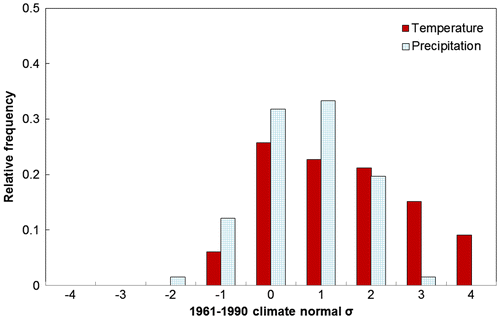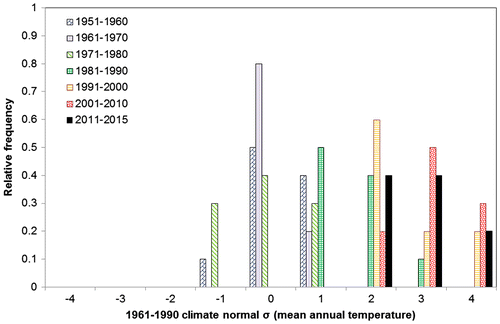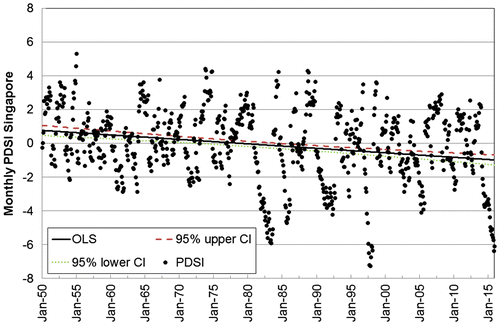Figures & data
Table 1. Estimated 2015 and projected 2030 urban population of the world’s largest cities.
Figure 1. Frequency distributions of annual mean temperature anomalies (in red) and annual total precipitation anomalies (in blue) for the period of 1950–2015 obtained from the Singapore climate data-set in Table A1. Each year’s anomalies are compared with the standard deviations (σ) of the 1961–90 climate normal, and are binned accordingly.

Figure 2. Distribution of 1951–2015 mean annual temperatures anomalies grouped by decadal periods compared with the standard deviations (σ) of the 1961–90 climate normal from the Singapore climate data-set in Table A1. The rightward shift in distribution for more recent data to +3σ is very distinct. NB: The 2011–15 data are five-year averages.

Figure 3. Distribution of 1951–2015 mean annual precipitation anomalies grouped by decadal periods compared with the standard deviations (σ) of the 1961–90 climate normal from the Singapore climate data-set in Table A1. NB: The 2011–2015 data are five-year averages.

Figure 4. Monthly Palmer Drought Severity Index (PDSI) time series for 1950–2015 and associated OLS trend (with 95% confidence intervals) calculated for Singapore based on (1) data from the Singapore climate data-set in Table A1, (2) Rengam Series soil available water content from Rahman (Citation1981), and (3) derived by the method described by Jacobi et al. (2013).

